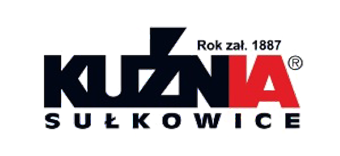Manual user instructions
General safety rules when working with hand tools manufactured in Kuźnia Sułkowice S.A.
Purpose of the manual
The purpose of the Manual is to ensure the safe use of hand tools manufactured at Kuźnia Sułkowice S.A.
The following standards are the minimum requirements that must be met to ensure safety during their application.
General thoughts
Workshop tools should be used in accordance with their intended use. Using the tools for other purposes is prohibited. It is forbidden to modify the tools and use unsafe working methods.
Before starting the works, their course should be carefully planned. The proper condition of the tool, free from damage, will ensure effective and safe work. The right size tool should be selected for each task. Before any activity that requires the use of a tool, it is necessary to check whether any damage has occurred since the last use. Defective tools must not be used. It is very important that during work with the tool, there are no third parties in our immediate vicinity who could be unnoticed in the area of the planned work. During the works, it is necessary to obtain appropriate protective clothing intended for use at the given workplace (glasses are required). After finishing work, put the tools in a safe place out of the reach of children.
Work with hand tools
Wrenches, screwdrivers
Always use the correct size of the tool. Incorrectly inserting the screwdriver into the screw head may cause it to slip, which may result in injury. Screwdrivers must not be used as a chisel or leverage. The force exerted on the screwdriver should be solely the hand pressure on the shaft of the screwdriver. The use of additional weights is prohibited.
When working with a wrench, remember to adopt the correct technique: pull the wrench, not push it.
Pliers products
The jaws of the pliers and pincers must have a shape suitable for the contour of the object to be gripped. Objects with a round cross-section should be gripped with pliers with teeth – they prevent the squeezed object from rotating.
Axes, pickaxes
Before starting work, always check that the ax is properly seated on the handle. To maintain balance when lifting the tool, make sure that the ground on which you are standing is hard and as straight as possible. Before performing an attack, make sure that there is no risk of hitting another person or any other undesirable object.
The ax is intended only for working with wood. Avoid contact with the blade.
Hammers, chisels
Before starting work, check that the hammer head is properly seated on the handle. Damage to the hammer may be evidenced by a change in the geometry of the face of the head (curved, cut, cracked) or by the formation of blisters or dents on it. In all these cases, the hammer will present a risk of jumping to the side or sliding off the object. During activities performed with a locksmith’s hammer, be especially careful not to hit any part of the body. All your attention should be focused on the activity you are doing. Work with a hammer is performed with the dominant hand.
Before performing an attack, make sure that there is no risk of hitting another person or any other undesirable object.
When straightening metals, remember that hardened, carburized or cyan parts must not be hit with a steel hammer as this will usually cause chipping.
Final remarks
After working with the tool, make sure that the work station and tools left behind do not pose any threat to the environment.

